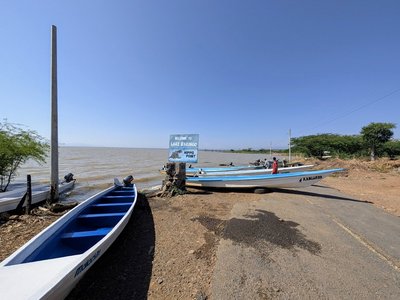

The GreatLakes research project, a collaborative 40-month initiative between the Technical University of Kenya (TUK) and the University of Natural Resources and Life Sciences, Vienna (BOKU), examined the hydrological, ecological, and socio-economic implications of these water level fluctuations.
The research conclusively established that changes in rainfall patterns are the primary driver of rising lake levels. Mean annual rainfall at Marigat near Lake Baringo doubled from 463 mm (1986-2009) to 978 mm (2010-2018). While the number of rainy days decreased by 19%, intense rainfall events increased by 318%. Analysis of catchment-wide rainfall for Baringo shows increases of around 30% after 2010, rising to more than 50% after 2018.
Of particular concern is the potential ecological disaster if Lake Bogoria, which is highly alkaline, were to overflow into the freshwater Lake Baringo. Analysis revealed that Lake Bogoria would need only a 70 cm rise from its 2020 peak level to reach the spill point, with overflow probabilities ranging from 38% to 77% under wetter climate scenarios.
The socio-economic impact has been severe, with approximately 80,000 households in the region affected by the inundations. Flood risk assessment for Lake Baringo demonstrated that under worst-case scenarios, up to 20,000 people could be affected with potential economic losses reaching US$41 million. The study highlighted the particular vulnerability of southern low-lying areas and the current lack of effective early warning systems.
The project's achievements include the development of a prototype Hydrological Information System to support informed decision-making in resource management. The research team conducted 25 research mobilities between Kenya and Austria, combining intensive field investigations with knowledge exchange activities. Field research spanned six lake catchments: Baringo, Bogoria, Solai, Nakuru, Elementaita, and Naivasha.
The project has yielded significant scientific output, including one peer-reviewed publication in the Journal of Hydrology: Regional Studies, with another manuscript in preparation. The findings have been presented through thirteen presentations and posters at international conferences in Kenya, Italy, and Austria. The project has supported several Master's theses, and one ongoing PhD at TUK. Additionally, five detailed project reports, a policy brief, and a project fact sheet have been produced.
While increased rainfall has been identified as the primary driver of these rises, changes in local catchment-scale processes remain poorly understood. Future research should investigate dynamics of land cover change and catchment hydrology, the contribution of erosion and sedimentation processes to lake level fluctuations, and the Lake Baringo drainage system, focusing on a newly discovered sinkhole and its role in regulating water levels. The researchers recommend strengthening hydro-meteorological monitoring systems and advancing modeling techniques to better understand evolving flood risks. Priorities also include improving interagency coordination with standardized data sharing protocols. These measures would support local communities and decision-makers in developing targeted adaptation strategies to enhance resilience against future lake level fluctuations.
The GreatLakes project (KOEF 08/2020), financed by the Austrian Federal Ministry of Education, Science and Research, represents an important step toward addressing the complex challenges facing Kenya's Rift Valley lakes through evidence-based management strategies and international collaboration.
